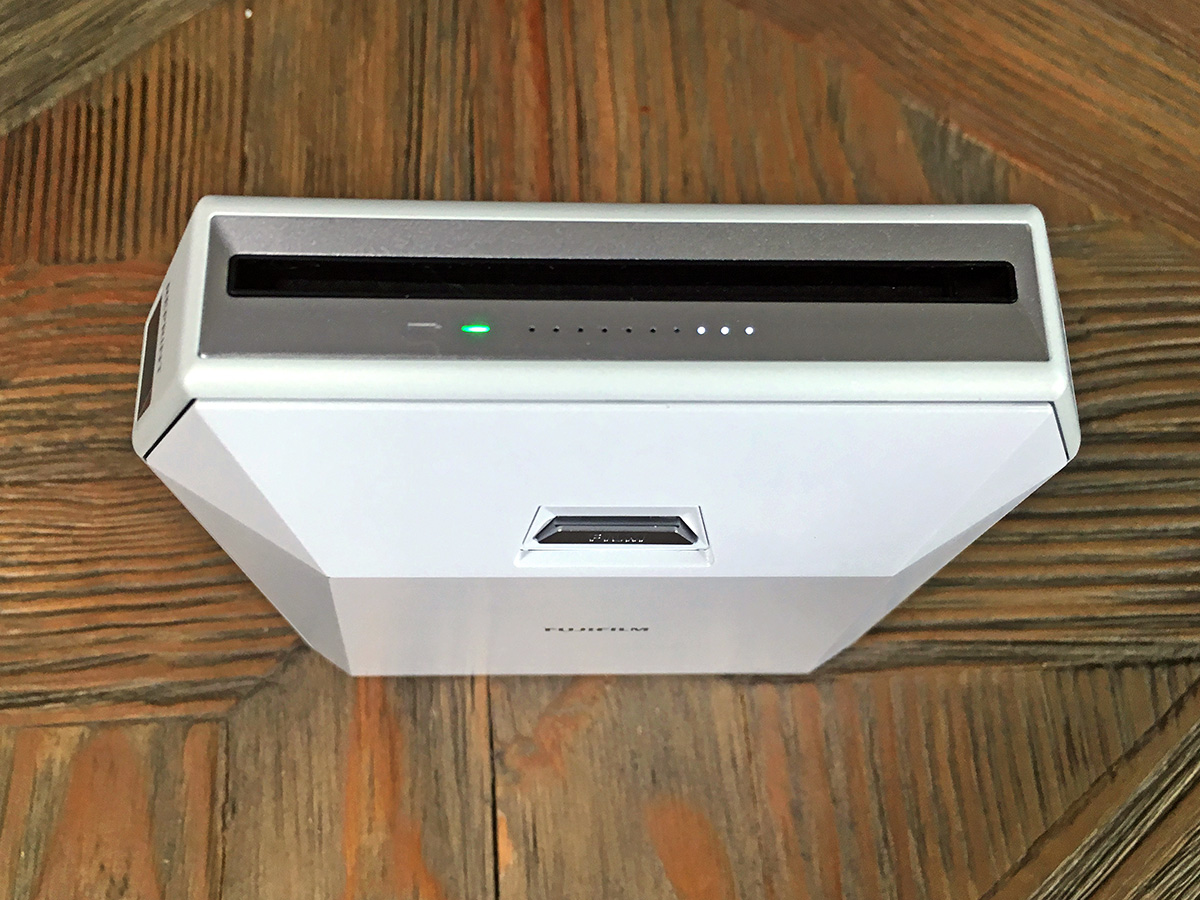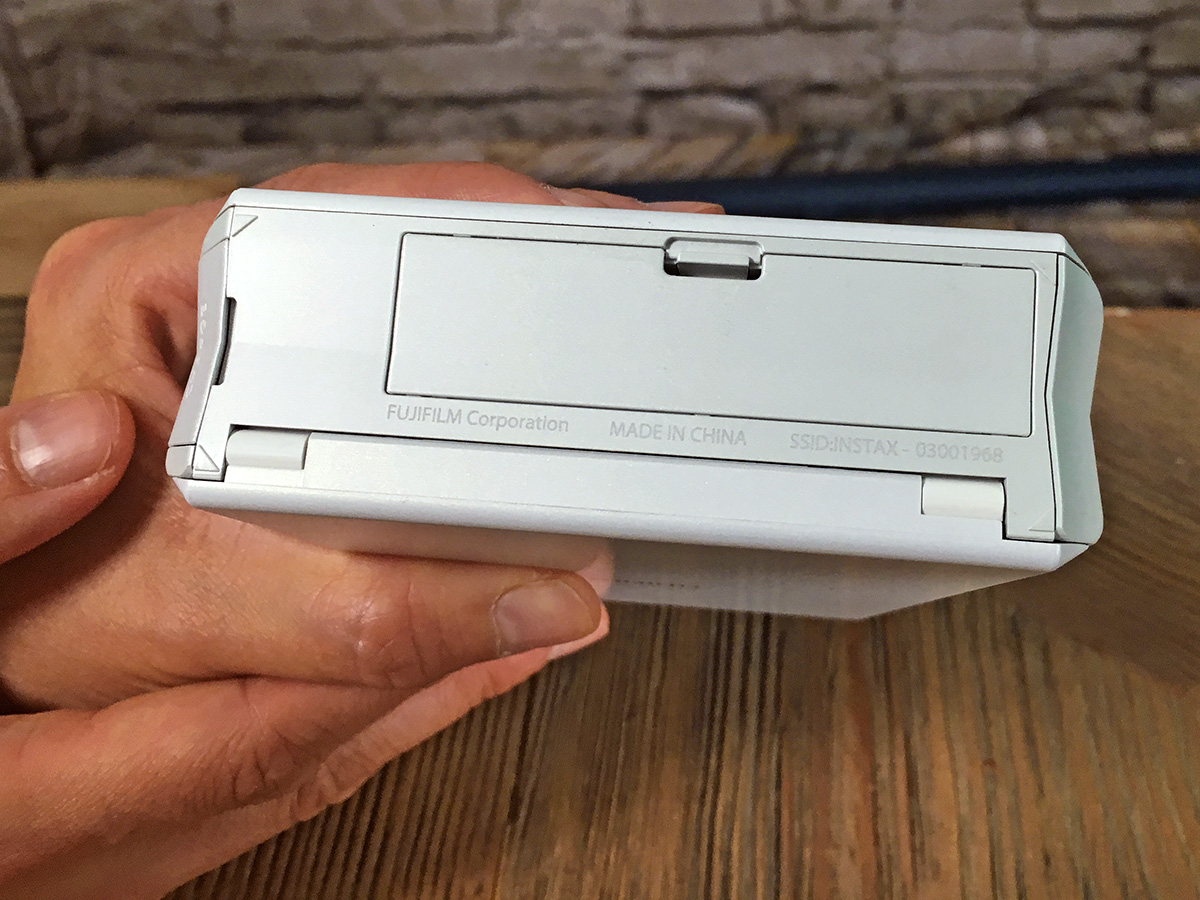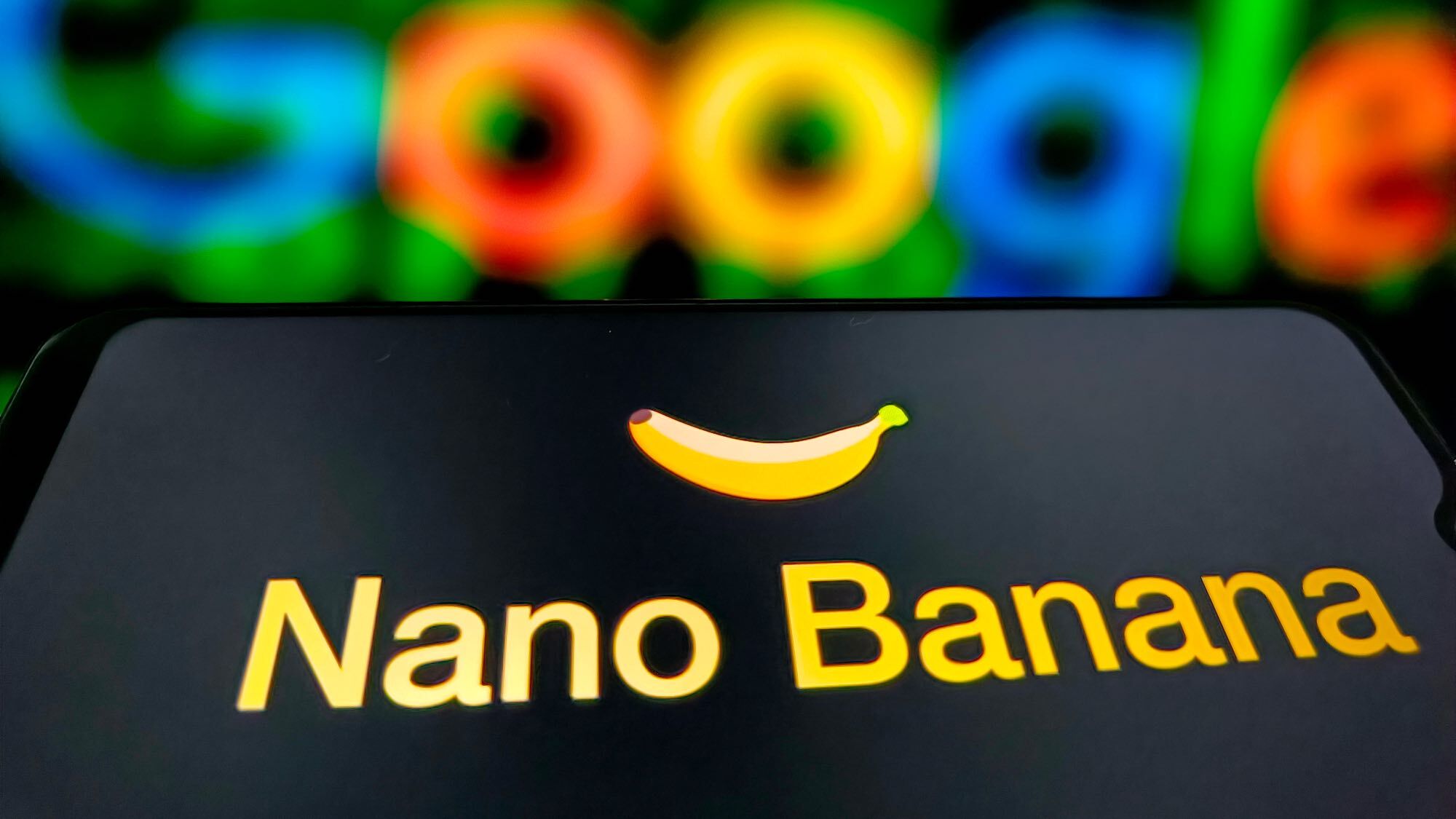Tom's Guide Verdict
This fun little printer churns out small Instagram-sized photos from your camera and social media pages.
Pros
- +
Fun
- +
App is easy to use
- +
Creates nice prints
Cons
- -
Expensive
- -
Can't remove tags from social media photos
Why you can trust Tom's Guide
Somewhere in my attic, I have a shoebox full of photos I took in the pre-digital era, documenting my adolescent hijinks and family vacations. The most recent photos in the box are at least 15 years old, as I stopped adding to it as soon as I got my first digital camera. Fujifilm's Instax Share SP-3 ($199) is the latest portable printer that looks to turn back the clock, letting you easily transform your digital memories into tangible prints.
Design
The angular, trapezoidal SP-3 looks like what you'd get if someone from the early 1980s tried to design a "futuristic" device. However, its design is more interesting than that of the Instax SP-2, which is little more than a boring, beige box.
At 5.1 x 4.5 x 1.7 inches at its widest points, the SP-3 is too large to carry in a pocket, but it will fit easily into a purse. It's larger than the Polaroid Zip (4.7 x 2.9 x 0.9 inches), but smaller than the Canon Selphy CP1200 (7.1 x 5.4 x 2.5 inches).
On the top edge is a small slot where finished prints pop out. Next to it is a power/status button and a row of 10 tiny white LED lights; the number of lights that are lit indicates how many sheets of film are left in the printer. On each side of the print slot, on opposing angled edges, are power and reprint buttons.
One of the broad sides of the printer pops open via a latch; that's where you insert the photo cartridges. Be careful not to open it while you still have undeveloped paper in the printer, or it will get ruined. The bottom of the printer has a small door for its removable battery, and next to that door is a covered micro-USB port for recharging the printer.
App
While printing instant photos may feel like a retro activity, the Instax Share app certainly isn't.

You can not only print photos from your phone's camera roll but also grab snaps from Instagram, Facebook, Google Photos and Flickr, provided you log in to your accounts from the app.
Get instant access to breaking news, the hottest reviews, great deals and helpful tips.

You can then crop or resize the photo, adjust its color, add text and even combine several photos into one print. However, unless you're doing something artsy, it's going to be hard to see individual images if you combine several on a 2.4-inch square.
If you choose a photo from social media, the bottom is overlaid with the logo, how many likes it received, the date and time it was posted, and the caption. It would be nice if you could turn this off.
MORE: Canon Selphy CP1200 Review: Portable Printer Delivers Quality Photos
Performance
The SP-3 speedily churned out prints. It took less than 10 seconds for it to pop out a photo, but then you have to wait a minute or two for the photo to be developed. Prints are roughly 2.4 x 2.4 inches.

While we're not talking Kodachrome-level quality, the SP-3's 318-dpi resolution produced good photos for the size. They were sharp enough for me to discern my cat's whiskers, though it wasn't good with very white settings. The details were lost in a photo of a white cat on a white chair. Turning up the contrast resulted in photos with a sort of faded look, like those pictures of your parents from the 1970s you discovered in the attic.
Compared to ZINK photos from the HP Sprocket, the SP-3's pictures were much better; they were crisper and much more saturated.
Printing Costs
Instax Square film is pricey — almost twice as much as the competition, not to mention other Instax film. A 10 pack of film retails for $16.99. For comparison, you can get a 20 pack of the 2 x 3-inch film for Fujifilm's other printer for $12.49.

ZINK paper, used in Polaroid and HP printers, is even less expensive: A 20 pack of 2 x 3-inch ZINK sheets for the HP Sprocket is $9.95, while a similar pack of 20 sheets for the Polaroid Zip is $8.88.
Battery Life
The SP-3's battery is good for about 160 photos. It turns itself off automatically after a minute or so to preserve juice. To recharge its battery, simply connect a microUSB cable to the printer.
MORE: Polaroid Zip Review: Portable Photo Printer Produces Blah Prints
Bottom Line
The Fujifilm Instax Share SP-3 is a fun little gadget for people who want to print small, square photos, whether from their smartphone or their Instagram account. Print quality was pretty good for the size, and I liked the editing options in the Fujifilm app, too. However, this $199 printer and its film are on the expensive side. If you're looking for something similar, consider the SP-2, which makes 2 x 3-inch prints, costs $50 less and uses less-expensive film. But if it's all about the square photos, check out the SP-3.
Credit: Mike Prospero/Tom's Guide

Michael A. Prospero is the U.S. Editor-in-Chief for Tom’s Guide. He oversees all evergreen content and oversees the Homes, Smart Home, and Fitness/Wearables categories for the site. In his spare time, he also tests out the latest drones, electric scooters, and smart home gadgets, such as video doorbells. Before his tenure at Tom's Guide, he was the Reviews Editor for Laptop Magazine, a reporter at Fast Company, the Times of Trenton, and, many eons back, an intern at George magazine. He received his undergraduate degree from Boston College, where he worked on the campus newspaper The Heights, and then attended the Columbia University school of Journalism. When he’s not testing out the latest running watch, electric scooter, or skiing or training for a marathon, he’s probably using the latest sous vide machine, smoker, or pizza oven, to the delight — or chagrin — of his family.

